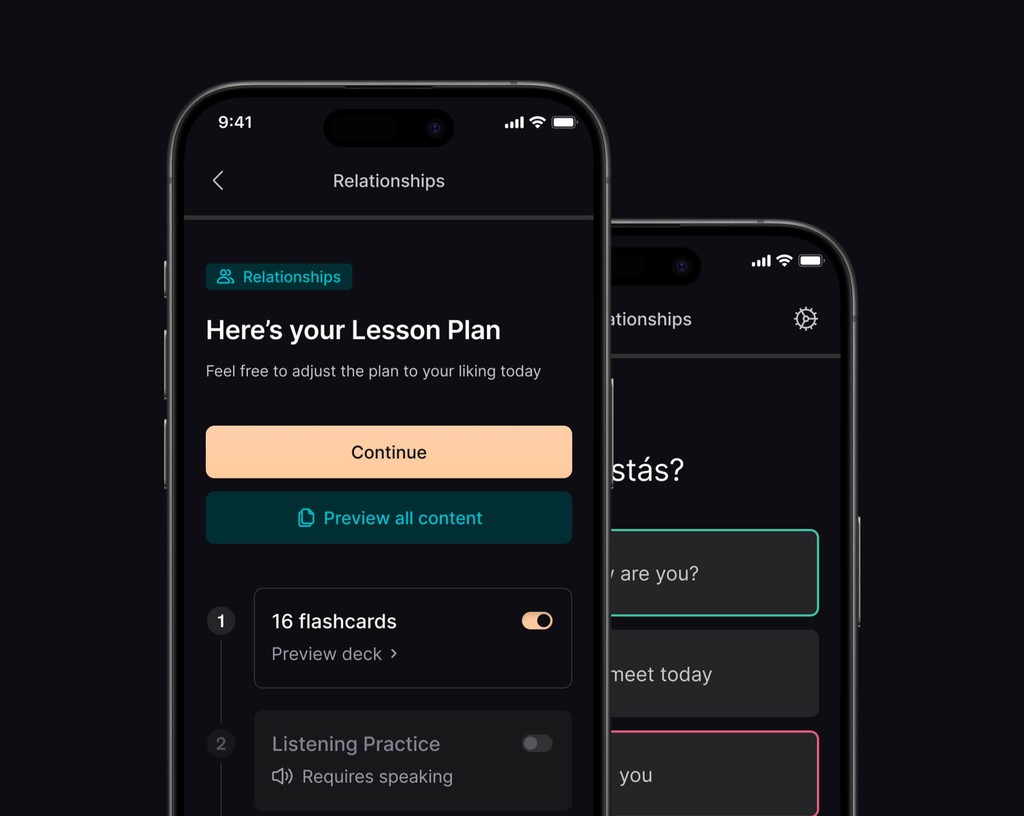The Science of Language Retention: Making Learning Stick
25 abr 2025
Culture Shock
Many students perform well on vocabulary or grammar tests, yet weeks later much of that knowledge has vanished. But truly retaining a new language requires more than cramming word lists or drilling grammar rules in isolation. Fortunately, cognitive science offers evidence-based strategies to make learning stick. By tapping into how memory works – via spaced repetition, contextual learning, and emotional engagement – educators can design programs for lasting impact.
Spaced Repetition: Timing is Everything
Forgetting is a natural part of learning. German psychologist Hermann Ebbinghaus famously mapped out the “forgetting curve,” showing how memories decay rapidly if we make no effort to reinforce them. His solution was spaced repetition– reviewing material at strategically spaced intervals to fight off forgetting and cement knowledge in long-term memory. Rather than a single marathon study session, information is revisited multiple times over days or weeks, just as it’s about to slip away.
Figure: The forgetting curve drops steeply after learning (dashed line), but each timely review interrupts the decline and raises the retention level again (solid lines). By spacing out reviews (green arrows), learners dramatically improve long-term memory retention. Decades of research have confirmed the effectiveness of spaced practice across subjects from medicine to vocabulary learning. In practical terms, regularly reintroducing material over increasing intervals prevents the “curve” from plummeting.
Not all review is equal: actively recalling information (for example, with a quick quiz or flashcard) reinforces memory far better than passive rereading. By building spaced recall activities into the curriculum, educators ensure that each new word or grammar rule moves from short-term familiarity into permanent knowledge.
Culture Shock’s approach: The Culture Shock platform is built around the spacing effect. Its AI-powered system tracks each learner’s progress and schedules reviews of words and concepts at optimal intervals. Instead of letting learners forget what they’ve covered, Culture Shock prompts timely practice to solidify it.
Contextual Learning: Words in Meaningful Situations
Another key to retention is learning in context rather than in isolation. Our brains remember best when new information is attached to a meaningful situation or story. In language education, that means encountering vocabulary and grammar in authentic sentences, dialogues, and real-life scenarios. Research supports this intuitive idea: one study found that students who learned new words through context-rich sentences and narratives had significantly better vocabulary retention than those who memorized the same words via rote repetition (oapub.org). Context provides clues and associations – semantic, visual, auditory – that deepen understanding and make the knowledge more stickable.
When learners see a phrase used in a dialogue about ordering coffee, for example, they absorb not just the direct translation but the usage, tone, and cultural nuance. Rather than treating a word as an abstract item on a list, the learner’s brain links it to a scenario (ordering coffee at a café) and perhaps to images or emotions from that experience.
Culture Shock’s approach: Culture Shock leverages contextual learning by immersing learners in real-world content. From day one, learners engage with local news, conversations, and cultural stories that matter – not just isolated textbook sentences. By seeing language in action (often tied to relevant cultural context), learners naturally pick up vocabulary and grammar in context. This immersion-based approach dramatically boosts retention and engagement.
Emotional Connection: Engaging Hearts and Minds
Memory is not purely an intellectual process – it’s also deeply emotional. Neuroscience has shown that experiences tagged with emotion often persist longer in memory than neutral experiences (sciencedirect.com). In the classroom, this means learners remember material better when they feel a personal connection, excitement, or even humor around it. When content resonates – whether by telling a compelling story, sparking curiosity, or reflecting a learner’s own life – it activates stronger neural pathways. Studies have found that if students feel something during learning, those bits of information are more likely to be engrained in their long-term memory (thesai.org). In other words, engagement and emotion lock in learning.
Culture Shock’s approach: Culture Shock recognizes the power of emotional engagement in language retention. The platform curates content that is not only linguistically useful but also interesting and culturally rich. By tapping into learners’ personal interests – whether sports, cooking, or pop culture – Culture Shock sparks genuine excitement (“This is so cool – I can read about something I love in French!”) and a personal connection to the material. Real-world content often evokes strong emotions as learners connect with global happenings through the new language. This makes practice feel less like a chore and more like an engaging experience, ultimately helping embed the language in memory.
Conclusion
In language education, the key isn’t adding more hours of rote drills, but making each hour count. Leveraging spaced repetition, contextual learning, and emotional engagement dramatically increases how much students retain. When we revisit knowledge at the right times, encounter it in meaningful contexts, and care about what we’re learning, we remember more and forget less. For those who embrace these principles, the payoff is learners who don’t just ace a quiz, but truly absorb the new language. Building a sustainable, meaningful language program means building memories that last – an outcome that benefits learners for a lifetime.
¿Listo para aprender?
Get immersed
in any language
Únete a CultureShock hoy y aprende a conversar con confianza, en cualquier lugar del mundo.




